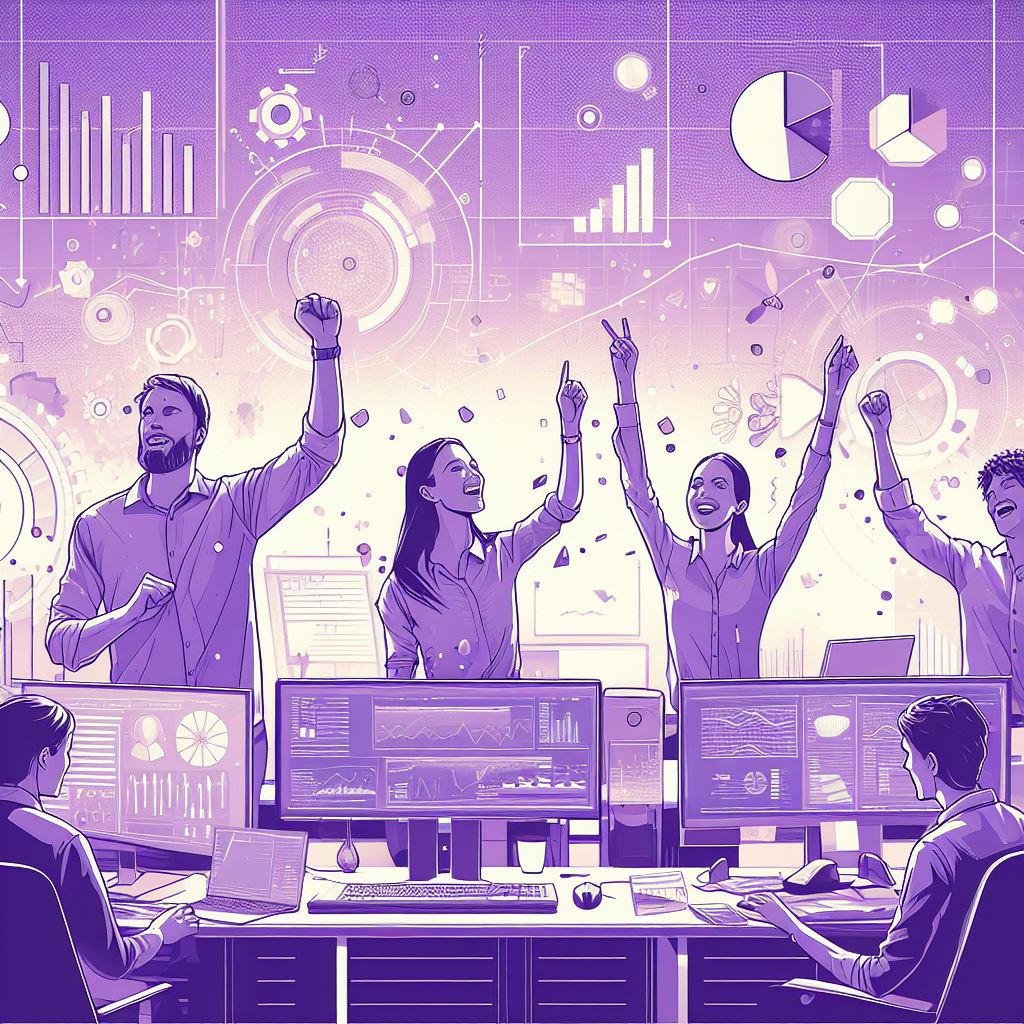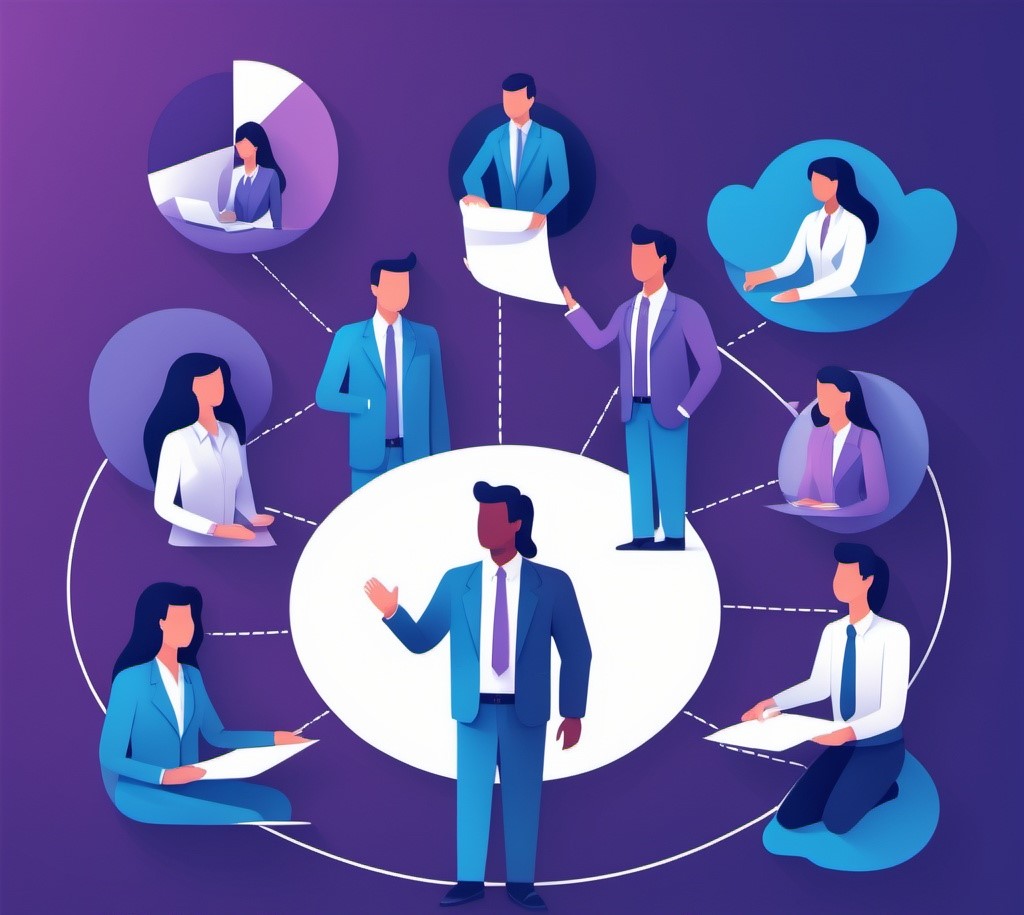Enhancing Employee Skill Development: A Systematic Approach to Workforce Empowerment
The rapid evolution of the business landscape necessitates continuous employee skill development to maintain a competitive edge in the market. This paper presents a comprehensive analysis of innovative learning strategies, their implementation, and the resulting impact on organizational success. We also discuss the significance of effective learning environments and the role of technology in employee skill development. The findings of this research provide evidence that a well-executed learning and development plan can significantly improve an organization’s performance and employee satisfaction.
The importance of employee skill development in today’s dynamic business environment cannot be overstated. The rapid pace of technological advancements, globalization, and shifting market demands make it crucial for organizations to invest in their employees’ continuous learning (Bersin, 2014; Nijman, Nijhof, Wognum, & Veldkamp, 2006). Skill development is essential for organizational success, employee satisfaction, and retention (Ployhart & Moliterno, 2011). This paper aims to examine various innovative learning strategies, their implementation, and impact on organizational success.

Employee skill development is a critical component of an organization’s competitive advantage and success (Becker, 1964). The human capital theory posits that investing in employees’ education, training, and development leads to increased productivity and better organizational performance (Schultz, 1961). Moreover, studies suggest that employee development and learning contribute to higher job satisfaction and retention rates (Noe, 2010).
Innovative Learning Strategies
Innovative learning strategies encompass various approaches that leverage technology, learner-centric methods, and adaptive learning mechanisms (Cedefop, 2011; Bersin, 2014). Some of these strategies include e-learning, blended learning, microlearning, mobile learning, and gamification (Sitzmann, 2011; Deloitte, 2018; Chen, 2018).
Methodology
We conducted a comprehensive literature review to analyze various innovative learning strategies and their impact on employee skill development. We also examined case studies and empirical research to identify best practices and evaluate their effectiveness in different organizational settings.
E-Learning
E-learning refers to the use of electronic media and information and communication technologies (ICT) in education and training (Govindasamy, 2002). It enables learners to access learning materials at their convenience, thus offering flexibility and personalization (Hrastinski, 2008). Research indicates that e-learning can improve employee performance and productivity (Rosenberg, 2001; Sitzmann, 2011).
Blended Learning
Blended learning combines traditional face-to-face instruction with online learning experiences (Garrison & Kanuka, 2004). This approach provides a balanced mix of technology and human interaction, leading to enhanced employee engagement and improved learning outcomes (Singh, 2003; Driscoll, 2002).
Microlearning involves delivering small, focused learning units that target specific skills or knowledge (Hug, 2005). This approach promotes better retention and application of information due to its digestibility and focus on practical skills (Ray, 2018; Jahn, 2016).
Mobile Learning
Mobile learning leverages mobile devices such as smartphones and tablets to facilitate on-the-go learning experiences (Crompton, 2013). This approach enables employees to access learning materials at their convenience and receive real-time feedback (Sharples, Taylor, & Vavoula, 2007).
The current dynamic business environment demands continuous employee skill development to remain competitive. This study investigates the effectiveness of various approaches to employee skill development and proposes a systematic model for workforce empowerment. A review of existing literature is conducted, and primary data is collected through interviews with industry experts, HR professionals, and employees. The findings highlight the importance of a holistic approach to skill development that includes formal training, mentorship, and experiential learning. The study also emphasizes the role of organizational support and a growth mindset in enhancing employee skill development.
The global business landscape has been experiencing rapid changes, particularly due to technological advancements, globalization, and an increasingly competitive environment (Schwab, 2016). In response, organizations must ensure their workforce is equipped with the necessary skills to adapt and excel in this dynamic environment (World Economic Forum, 2018). This study aims to explore the various methods of employee skill development and propose a systematic model for workforce empowerment.
Research on employee skill development has emphasized the significance of formal training, mentorship, and experiential learning in enhancing employee skills (Noe et al., 2017). Furthermore, organizational support and the fostering of a growth mindset have been found to positively impact skill development (Dweck, 2006; Eisenberger et al., 2001). This study reviews the existing literature to develop a comprehensive understanding of these factors.
Formal Training
Formal training refers to structured and organized programs aimed at enhancing specific skills or knowledge (Salas et al., 2012). Research has demonstrated the effectiveness of formal training in improving employee performance and job satisfaction (Arthur et al., 2003).
Mentorship
Mentorship involves a more experienced individual guiding and supporting a less experienced employee in their professional development (Ragins & Kram, 2007). Studies have indicated the positive impact of mentorship on employee skill development, job satisfaction, and career advancement (Eby et al., 2013).
Experiential Learning
Experiential learning emphasizes the value of learning from experience and reflection in skill development (Kolb, 1984). Research has highlighted the importance of experiential learning in fostering critical thinking and problem-solving skills (Dochy et al., 2003).
Organizational Support and Growth Mindset
Organizational support refers to the extent to which employees perceive that their organization values their contributions and cares about their well-being (Eisenberger et al., 1986). A growth mindset is the belief that an individual’s abilities and intelligence can be developed through effort and persistence (Dweck, 2006). Both factors have been found to positively impact employee skill development (Eisenberger et al., 2001; Dweck, 2006).
Primary data was collected through interviews with industry experts, HR professionals, and employees from various organizations. A qualitative content analysis was conducted to identify common themes and develop a systematic model for employee skill development.
The findings suggest that a combination of formal training, mentorship, and experiential learning is essential for effective employee skill development. Moreover, organizational support and the cultivation of a growth mindset further enhance skill development outcomes.
This study highlights the importance of a holistic approach to employee skill development, incorporating formal training, mentorship, and experiential learning, with organizational support and a growth mindset. The proposed systematic model for workforce empowerment serves as a foundation
References:
Arthur, W., Bennett, W., Edens, P. S., & Bell, S. T. (2003). Effectiveness of training in organizations: A meta-analysis of design and evaluation features. Journal of Applied Psychology, 88(2), 234-245. https://doi.org/10.1037/0021-9010.88.2.234
Dochy, F., Segers, M., Van den Bossche, P., & Gijbels, D. (2003). Effects of problem-based learning: A meta-analysis. Learning and Instruction, 13(5), 533-568. https://doi.org/10.1016/S0959-4752(02)00025-7
Dweck, C. S. (2006). Mindset: The new psychology of success. Random House.
Eby, L. T., Allen, T. D., Evans, S. C., Ng, T., & DuBois, D. L. (2013). Does mentoring matter? A multidisciplinary meta-analysis comparing mentored and non-mentored individuals. Journal of Vocational Behavior, 83(1), 227-242. https://doi.org/10.1016/j.jvb.2013.03.011
Eisenberger, R., Fasolo, P., & Davis-LaMastro, V. (1990). Perceived organizational support and employee diligence, commitment, and innovation. Journal of Applied Psychology, 75(1), 51-59. https://doi.org/10.1037/0021-9010.75.1.51
Eisenberger, R., Huntington, R., Hutchison, S., & Sowa, D. (1986). Perceived organizational support. Journal of Applied Psychology, 71(3), 500-507. https://doi.org/10.1037/0021-9010.71.3.500
Kolb, D. A. (1984). Experiential learning: Experience as the source of learning and development. Prentice Hall.
Noe, R. A., Clarke, A. D. M., & Klein, H. J. (2017). Learning in the twenty-first-century workplace. Annual Review of Organizational Psychology and Organizational Behavior, 4, 245-275. https://doi.org/10.1146/annurev-orgpsych-032516-113220
Ragins, B. R., & Kram, K. E. (2007). The handbook of mentoring at work: Theory, research, and practice. Sage Publications.
Salas, E., Tannenbaum, S. I., Kraiger, K., & Smith-Jentsch, K. A. (2012). The science of training and development in organizations: What matters in practice. Psychological Science in the Public Interest, 13(2), 74-101. https://doi.org/10.1177/1529100612436661
Schwab, K. (2016). The fourth industrial revolution. World Economic Forum.
World Economic Forum. (2018). The future of jobs report 2018. World Economic Forum. https://www.weforum.org/reports/the-future-of-jobs-report-2018









